It’s hard to believe that nearly a year has passed since we first discovered the existence of Vocolinc’s latest product, the MistFlow Smart Humidifier. In fact, our review of it’s older, smaller sibling, the Flowerbud came out over two years ago, and whilst a lot has changed around the HomeKit landscape in that time, the Flowerbud is still the only smart diffuser on the market that works with all three systems (HomeKit, Amazon Alexa, and Google Nest). At the time of writing, the same currently goes for the VH1, the official model number for the MistFlow. Since the review unit arrived, we’ve left a couple of video clips and images on social media to both let our readers know that a run-through of the device is coming, but also used it as an opportunity to let people ask any questions they may have. The main question was, perhaps unsurprisingly, what the difference is between the MistFlow and the Flowerbud. The short answer is, not so much, but it would be unfair to not qualify that without explaining the important differences that do exist between them. In this review, I hope to do just that, as well as break down what I like, or don’t like, and what you can expect from a device that is out on its own in HomeKitland.
PACKAGING
Vocolinc’s packaging was always distinctive, with large swathes of green adorning the sides of their boxes. This has changed somewhat, since the introduction of their Smartbar (smart plug), and is now more in line with the kind of packaging you’d see on the shelves at an Apple store. That’s no bad thing, and as long as the contents are well protected, it matters not. The VH1 follows this route and is well protected with polystyrene on the bottom and top, holding the device in place. The information on the front touts the four main features of the VH1, which are;
- a large water tank capable of holding 2.5 litres | 2.642 quarts | 5.283 pints
- a run time of up to 30 hours
- suitable for humidifying rooms up to 40m² | 131ft
- five mist levels
The third point seems a little ambitious, but it may well depend on a variety of factors, as well as what point one deems a room to be ‘humidified’. I’ll talk about my tests later on in the review, but with me not having lab conditions in which to test these claims, the results may vary and will be limited to the size of the room or rooms in which I’m able to test the VH1 in.
In terms of basic specs, the VH1 is 180 x 180 x 285 mm | 7.08 x 7.08 x 11.22in (w,d,h), and weighs 1.1kg | 2.42lb. It uses 2.4GHz WiFi, as expected, and has a rated power of 30w.
The rear of the box goes into a bit more detail, asking the rhetorical question “How Smart?”, to which the answers (in English and French) are;
- Multiple controls with your voice (the ‘multiple’ part may possibly only be achievable with HomeKit)
- In-app automations
- Rainbow Spectrum mood light
- Anti-bacterial technology
- Scheduling
- Automatic shut off
- Timers
- Auto target humidity
- aroma diffuser
- remote access
Now the list above does include things that might not be considered ‘smart’ as such, so I’d take this list to be more a set of ‘features’, but you get the idea. The second last point may grab your attention if you’re already an owner of the Flowerbud, but I’ll address this later on.
THE MISTFLOW
Once out of the box, besides the VH1 itself, you only get a small manual in English and French, that also contains one of two instances of the HomeKit code. The other QR code is found on the back of the device, located between the water level marker and the power cord. The first impression I got – taking into account that I’m an owner of two Flowerbuds – is one of really solid build quality. The Flowerbud was nice, but if I’m honest, the top part of the Flowerbud did feel a little loose fitting to me. Not so with the VH1, as the body section, although in two connected parts, makes up for around 95% of the device, with only the lid atop the VH1 being removable. The fit of the lid is quite snug too, without being difficult to remove. The plastic used for the lower portion has a textured feel to it, so while it’s not going to be a fingerprint magnet, due to it being off-white, it’s also going to be resistant to slipping out of your hands, not that I envision anyone carrying this around too often.
The front of the VH1 has two simple touch-sensitive controls along with the Vocolinc logo. The lower button is to simply turn the built-in LED Rainbow Mood Light on or off. This, as you can probably guess, simply requires a gentle tap to achieve. If you long-press (for at least five seconds) on this control, you can change the colour of the mood light manually. The button above this sets the diffused water to output at a low or high level. I’m happy to say these touch controls are pretty responsive at all times, although you have to make sure you touch them fairly centrally, not just the edge of the icons.
When the VH1 is plugged in, regardless of whether it’s on standby or active, will show a little white LED below the middle power icon. Pressing the aforementioned button then turns the steam on, at a lower level, in the first instance (the L icon), with a second press sending out steam at a high level (the H icon). The Low level is the equivalent of level 3 in the Vocolinc app, with level 5 being the highest speed level). Each of these will reveal a small white LED depending on which speed is in use, and whether the MistFlow is active. As already mentioned in the features, the VH1 is capable of five levels of mist, however, like the Flowerbud, this level of control is only available via the Vocolinc app or some 3rd party HomeKit apps. Pressing either of the touch-sensitive buttons is followed by a small beeping sound.
The rear of the VH1 is home to the power cord, which in this case is fixed in place and can’t be removed. Whilst we use North American Type A and B plugs in Taiwan, Vocolinc could only send the EU version at the time, which comes with a European Type C plug. Luckily, I have both an adaptor and a voltage converter in order to test the VH1 out, although, in actual fact, I did find that the voltage converter was not needed, even though the packaging states that the EU version requires 220-240V to function*. For the US version, which should be out shortly after this review drops, you will, of course, get a type A plug, with it working on 110-120v.
* I should state, I am not endorsing using a device intended to be used in a region it’s not designed for and this is only my personal finding.
The rear also reveals a translucent plastic strip, much like you might see on an electric kettle, that reveals the amount of water in the tank, with simple dots for markers, and a ‘Max’ marker at the top. As previously stated, the tank is capable of 2.5 litres of water. While I’m happy to see this addition, its usefulness is entirely dependent on whether the VH1 is placed in a location where it’s also easily visible from the back. Either way, you can just as easily see the water level from the front.
The top of the VH1, which is essentially a lid, has a small aperture by which the steam is allowed to vent. The top also features a ripple design that we’ve already seen deployed with Vocolinc’s own VAP1 PureFlow Air Purifier, so it’s a nice little touch to see this carried over to another device. Indeed the ‘dewdrop’ shape of the vent is also a nice touch, and could easily have been a simple circle, so I’m glad a little thought has gone into the design process here.
The base of the unit reveals four rubberised feet, which is handy for any surface, but even more so with a device where water can (and almost certainly will) involve water spillage at some point. Right in the centre is an air intake that is required to help the atomiser create the diffused water. To the right of that is a small hole, that in the manual is labelled a water outlet. I can only assume that excess water comes out of here if required. Aside from these parts, there’s nothing much else to report on that involves the base.
Upon opening the VH1, by simply removing the lid, you get to see some interesting parts, at least things that look a fair bit more intricate or involved than is the case with the Flowerbud. Right in the centre is the atomiser itself, which does the job of breaking down the water using ultrasonic technology. This is surrounded on three sides by pill-shaped sections which house the full-colour LEDs. Each of the three sections holds two individual LED units, so you do get decent coverage for what is, essentially, quite a large water tank. To the left of the atomiser is the water level sensor. This detects when the tank gets close to empty and will automatically switch the atomiser off. In a colleague’s test with his own VH1, it seems the Vocolinc app will send you a push notification to let you know the tank is empty, although he found the tank to still have some water inside. I guess it’s better to have some than for it to be totally dried out, but it’s something to note. To the right is a tall cylindrical shaft. This is labelled as the Air Outlet. At this point, I have to plead some measure of ignorance as to how these types of devices work, other than the ultrasonic atomiser doing its job of shattering the water into vapour, that’s then forced out through the top vent in order to humidify your home.
As far as the parts inside go, as with the outside, they feel well put together, and although trying to clean around these sections may be a bit more involved than with the Flowerbud – which is essentially a shallow dish compared to the VH1 – taking your time to clean this is required in order to make sure the VH1 gives you unfettered service for as many years as possible. Incidentally, both of the Flowerbuds in our home have served us well for the past two years, and so I don’t have any reason to doubt I’ll get the same reliability with the VH1. Indeed, whilst the Flowerbud initially revealed a few connectivity issues, which seemed to plague other Vocolinc devices, this hasn’t been the case with either the VH1 or any of my other Vocolinc devices for well over a year now.
The final part of the puzzle (and it’s a bit of a puzzle to me really) is a funnel attached to the inside of the lid. The funnel is directly related to the vent at the top of the lid, and I can only assume the diffused water is aided in escaping the tank with assistance from the funnel, in conjunction with the fan built into the base of the unit. Inside the funnel is also a floating mechanism, although I’m honestly not sure what its purpose is. It floats atop the water in the tank, but I don’t think it’s designed to measure the water level, as the sensor on the base already seems to have that covered, so it probably assists in directing the steam upwards towards the vent. In a separate test, it was noted that as the water tank became more empty, the stream of mist became progressively less powerful. This could be the result of the mist having further to travel along the central funnel, but we’ve contacted Vocolinc to clarify if this is the case. Needless to say, whilst I’m more than happy to wax lyrical on the design of the device, and it’s functionality, I don’t want to get into the technical aspect of how it all works. That’s why we have Wikipedia and YouTube I guess…
The mood light, although not absolutely necessary, does add an extra dimension to a device that could be argued is designed not to be seen, much less heard, so, like the Flowerbud, the VH1 in tandem with the mood light, can be a focal point for the home. It would seem that the design of the Flowerbud did split opinions, with just as many decrying the design as lauding it. I personally liked the design, and I’m just as happy with the slightly more utilitarian look of the VH1. Without the mood light, the translucent tank would look a bit odd, so I think it works with some colour and is also bright enough to act as a night light.
APPLE HOME AND VOCOLINC APPS
In the Home app, the VH1 provides a single combined tile, or two separate tiles if you prefer. The two tiles, shown above are for control of the humidifier itself, and the mood light. The two separate screenshots show the MistFlow as ‘Rising to 88%’ in the first image, and ‘Set to 52%’ in the other, which I’ll explain next.
The VH1 can be set to on or off, via the button at the bottom in the first screenshot. However, in order to make it start pushing out mist, you need to have the ‘Target Humidity’ level set higher than the relative humidity in the room, which can be seen in the settings section. If, for example, the target humidity is set to 55%, but your room is 60%, then the VH1 doesn’t need to do anything, as it’s already more humid than you’ve set it to be aiming for. In these instances, the tile in the Home app will show ‘set to 55%’. If in the same example, you set the target to humidity to 70%, then the VH1 will start humidifying, with the tile showing ‘rising to 70%’. If, on the other hand, you just want to just have the VH1 to start pumping out air when you want it to, regardless of the humidity levels, then you can just set the target humidity level to 100%, so it’ll always work when you turn it on via the touch controls, via Siri or via a timer. Just be aware that it won’t automatically turn off, as it’s unlikely you’ll be able to reach 100% humidity, so just set a countdown timer if necessary.
There’s no option to set the power level for the mist in the Home app, so by default, when you turn the VH1 on in the app, it is always set to the highest level. However, the good news is that the power level can be set to any of the five levels as part of a scene or automation using 3rd party apps like the Eve for HomeKit app for example. As can be seen in the screenshots above, I’m able to create a scene that allows the target humidity and Spray Quantity to be set, as well as the Target Humidity level, whether the VH1 is active or not, in addition to the target state.
As for the mood light, this acts just as though it were a smart colour bulb, so you get all the same controls you would normally get for any smart bulb, which also includes colour temperature control and dimming capabilities. The mood light can also be used in automations, as you would any smart light.
Now, I’m not a massive fan of the Vocolinc app, but there is a new version due soon, that has had a major overhaul, so I may be convinced to use it more then. As is the case with many Vocolinc products, you get a little extra control in the Vocolinc app (formerly known as LinkWise). The VH1 will show up with one tile in the app, and when you long-press on it, you get access to additional controls and settings. The Overview tab allows for control of both the brightness and colour of the mood light on one side with a slider interface, with the strength of the mist controlled with another slider control that allows you to set the mist to any one of five levels, with an Off button below it. Beneath these is a timer slider. This is something you don’t get in the Home app, although this function is available in other 3rd party HomeKit apps. However, whilst these aspects are exposed, they are not presented in anything approaching a user-friendly way, so you may as well use the Vocolinc app in this instance.
Tapping on the colour icon below the brightness slider will open up the Moments tab to allow access to a colour wheel, as well as a colour temperature slider. You also get access to an effects section, which has three colour lighting options – Breath, Blink, and Flow. If you’ve had any other Vocolinc lighting products, you should be quite familiar with these options, but they essentially do with colour what their title suggests. You can also set your favourite colours and effects in the Favourites section.
In the third tab, labelled Schedules, you can preset times for the VH1 to come on an off on certain days of the week, and times of the day. The Schedule feature is fairly rudimentary, but it gets the job done without any fuss, if you want the VH1 to do its work, day in day out, at specific points in the day or week. The last page, Settings, allows access to the Vocolinc Cloud, which is required if you want to use the VH1 with Google Home or Amazon Alexa. Here you can also set the target humidity level, which in my opinion would probably be better in the Overview section, although it’s quite crowded already. You also get to see the current relative humidity, as well as turn on push notifications. These notifications are currently limited to letting you know when the VH1 runs out of water, although it will automatically turn off by itself when it does run out of water anyway, but it’s a good enough reminder to keep the VH1 topped up even when it’s not in use at the time.
FLOWERBUD VS. MISTFLOW
I’ve been asked about the differences between the new MistFlow and the Flowerbud a few times already, and so it should be addressed here. I see the two devices as different if similar products. Both acts as a diffuser, both have colour mood lights, and both are capable of humidifying – to an extent; Vocolinc state that the Flowerbud is first and foremost an ‘Aroma Diffuser’ which is how it has been marketed. by its very nature, if you don’t add any essential oils, then it does become a humidifier of sorts, but due to the small water reservoir (3ooml / 10.14fl oz), it’s not really capable of humidifying a room for too long, and even then, only generally a small room. This is where the MistFlow differs. The 2.5lt tank dwarfs the capabilities of the Flowerbud in respect of how long it can run for, and with a more powerful diffuser, it can outflank the Flowerbud in how well it can humidify a larger room. Of course, the MistFlow can also be a diffuser, but in my opinion, there’s room for both; You may want to just humidify a room with plain water on a daily basis during the winter, but you might not want the smell of Lavender, Tea Tree, or Eucalyptus filling the home twice a day, every day, I imagine. So from my perspective, they both have their roles to play. I’ve often found 30 minutes with the Flowerbud and a few drops of essential oil is more than enough to fill a room with a pleasant smell, but it won’t necessarily be enough to bring up the humidity levels, so it’s probably best to have that duty left to the VH1.
THE VH1 IN USE
I’ve stated I like the design and functions, but of course, it needs to do the job it’s tasked to do, otherwise what’s the point? First of all, is connectivity; I’ve had it connected to a network that’s already slightly bursting at the seams with a variety of devices, but in the few weeks I’ve had it plugged in, it hasn’t disconnected a single time. That’s not to say it deserves a medal for doing what it should be able to do at a minimum, but we’ve all experienced devices that seemingly disconnect for no apparent reason, so it should be at least noted in light of this. I also had it connected to a separate network that was around 10m / 33ft away, with a couple of doors and a wall to make it more difficult to connect to, and it had no issues at all.
when comparing its output with that of the Flowerbud, visually it became apparent that it’s a fair bit more powerful. I don’t have any specific equipment by which to measure the flow of the mist, so you can take my finding as anecdotal for now. The rated power of the VH1 is double that of the Flowerbud,(15W), so I guess this is of no surprise. As already stated, the power output for the Flowerbud is more than enough for aroma diffuser, but for humidifying a space except for the tiniest of box rooms, you’re probably going to need more power. Add this increased power to a much larger tank and you’re getting a lot more steam, with less need to refill.
One thing I did notice with regards to the humidity sensor when I first started using the VH1, is that it took some time to ‘settle’, by which I mean the humidity level was inaccurate when compared to other sensors I generally trusted to be fairly spot-on. Once I’d left it for a while (maybe 3o minutes), the humidity levels matched the other sensors and continued to match them within about a degree or so, from that point forward. If I moved the device to another room, which I’ve done a few times during my tests, I would notice the sensor took a bit of time to reach an accurate reading again, so this is something to be aware of, although, in normal circumstances, I’m guessing most people would keep these in one location most of the time. One other point to note is that the humidity sensor does take a little time to start showing the results of increased humidity, in part because the sensor is located inside the base of the unit, possibly near to the intake fan, and as such isn’t pulling in more humid air until the room starts to fill up. I would say the sensor being near to the intake fan isn’t the best place to put the sensor, but then I don’t know what’s involved in where these sensors should be placed, so I’ll defer to the company’s experience. I asked the company about this, and whether there was a way to increase or adjust the accuracy of the humidity sensor, and although their tests didn’t show the issue I’d noticed to much of an extent at all, I was told they would be issuing updates on a regular basis to tackle any potential issues. If you’ve owned any Vocolinc products in the past, you’ll more than likely notice that they push out small updates on a regular basis, which is comforting to note. One downside that has been noted by my colleague in a separate test is that in larger rooms, it can struggle to get to the higher target humidity levels, so as I mentioned before, the numbers mentioned on the front of the box may be a bit ambitious. That being said, according to The Mayo Clinic, the ideal humidity levels for the home should ideally be between 30-50%, so anything over this number isn’t necessary for most scenarios. I think that even though the VH1, including the ‘dumb’ equivalents of this, may show the option to get to 100% humidity, much like the speedometer on a car isn’t actually capable of reaching the maximum speed shown, humidifiers are unlikely to be able to reach 100% humidity levels. For example, I have a humidity sensor in our quite small shower room, but even then having a shower in such a confined space, the steam generated after 15 minutes or so, only manages around 85% humidity most of the time. All I can say is that there are a lot of factors that can affect the outcome of results, and for me, living in a country that is relatively humid for a lot of the year, while also cold at times, it produced some different results to my colleague’s tests on occasion, so as they say – “Your Mileage May Vary”.
I was recently asked if the VH1 makes much noise, and even though it’s rare for my home to have a truly quiet period of time, at the highest speed, you can hear a motorised bubbling sound, but no real high frequencies, at least none that I could detect. If you were to have this running whilst you slept, I can’t really see this keeping you awake, and I didn’t find it to be a problem at all, with the one night I tested it out, although I had it set to the lowest level in this case.
WRAPPING UP
I should state, that where I live there aren’t a lot of calls (or even much use) for humidifiers for a large portion of the year, as humidity is, as previously stated, relatively high, even in the winter. However, from December to late February, even Taiwan’s north can get dry enough to warrant a bit more humidity. I guess in this case, it’s going to be something akin to a Christmas tree, where it’s only required for a brief part of the winter period. I mention this, not because it’s not going to get much use, but I want to make you, the reader, aware that my tests were conducted when our home wasn’t in a situation to be deemed an ideal candidate for a humidifier, so you may find the VH1 of much greater use, and find more beneficial results than I would have found. Nevertheless, the results I did find, show that this is worthy enough of the term ‘humidifier’, and as already posited, this does set it apart from the Flowerbud, which really is a different device.
Would I recommend it? Yes, assuming you require a device like this, and want the ability to not only turn it on and off via automations, but also with your voice, or even as part of a scene. The mood light may be overlooked in some ways, but I think, for the price (€69.99 / US$69.99), you’re getting a double-duty product in some ways. The argument that you can use a dumb humidifier and a smart plug will raise it’s head no doubt, and if someone wants to do that, then it’s ok. It’s always good to have the choice, and whilst the simple scenario mentioned can work (assuming the device automatically turns on when powered), you aren’t going to get as much control as you would with the VH1, and for that reason, I’d still prefer one with full HomeKit ‘smarts’.
If there’s anything to be said that I’m not happy about, it would really only be the relative humidity sensor. It could be a lot more responsive, although once it’s had time to settle, I did found it more accurate than I’d expected, but less so when it’s initially put to work, as already outlined. Other than that, I’m really a fan of the design, the larger tank, the mood light, and the touch controls.
Now, if they could just make a HomeKit compatible dehumidifier, I’d have something for the other nine months of the year…
Full disclosure: Vocolinc provided HomeKit News with the MistFlow Smart Humidifier for the purpose of this review. No other compensation was made, requested or has not in any way influenced our opinion of this product.


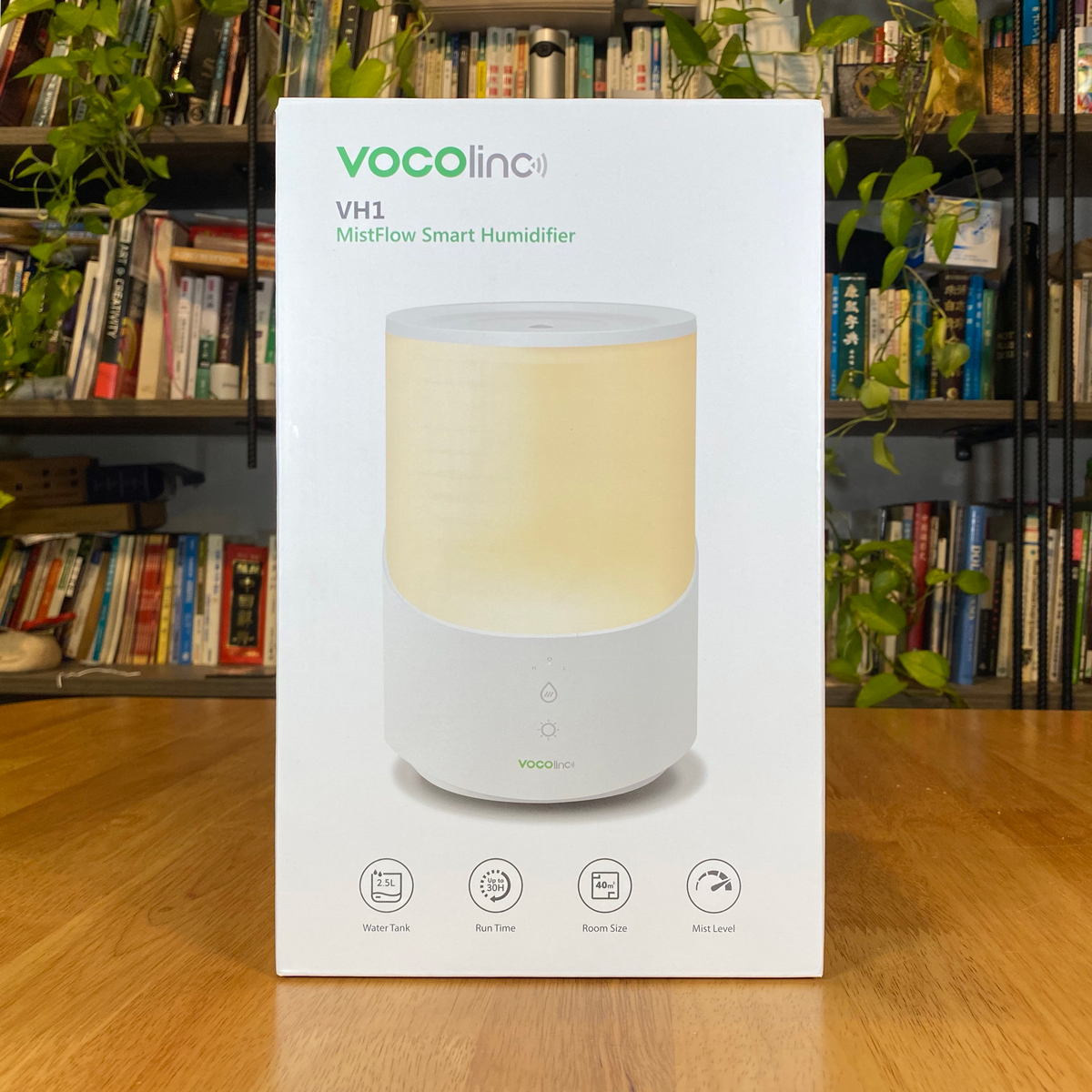
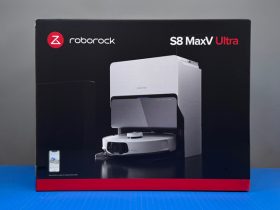
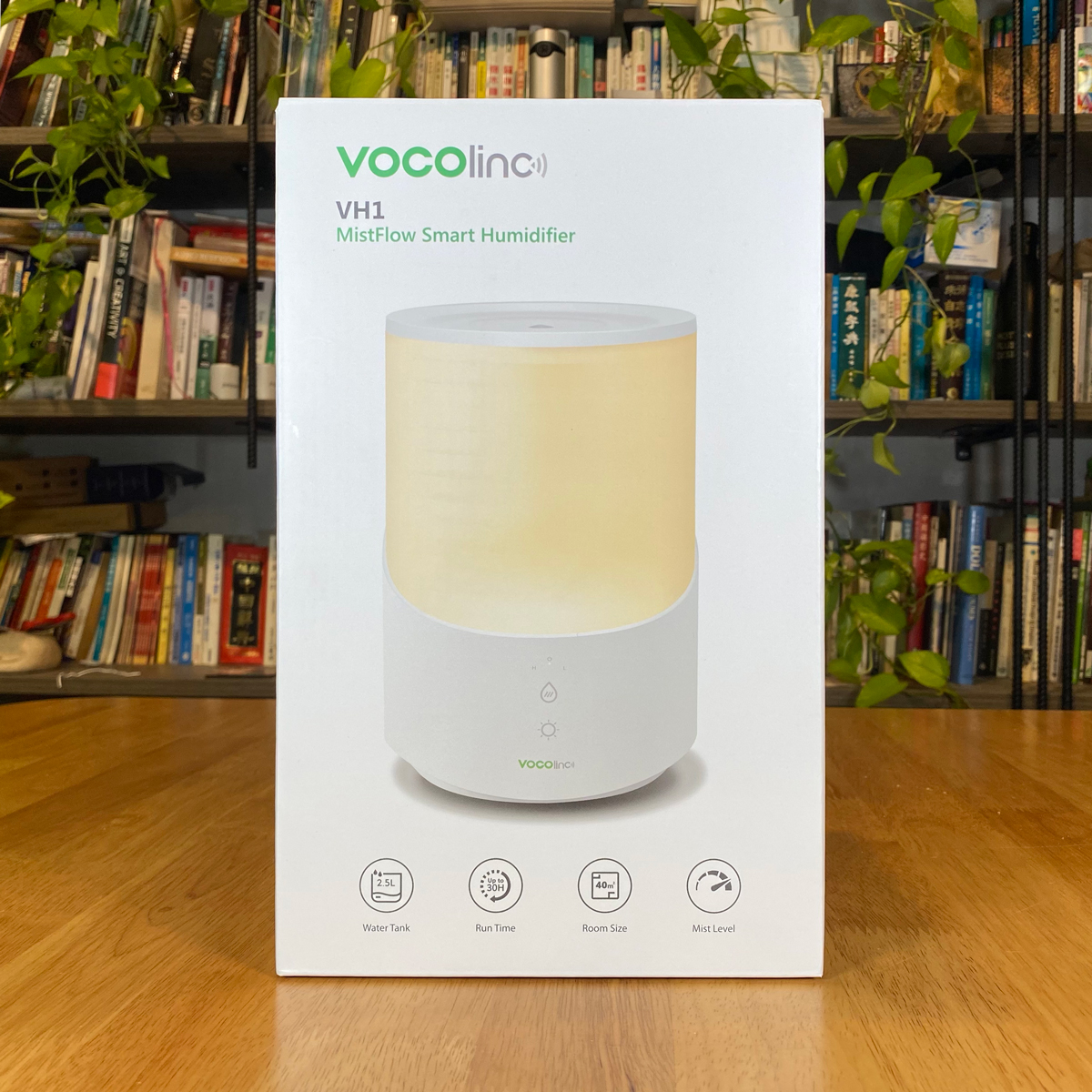
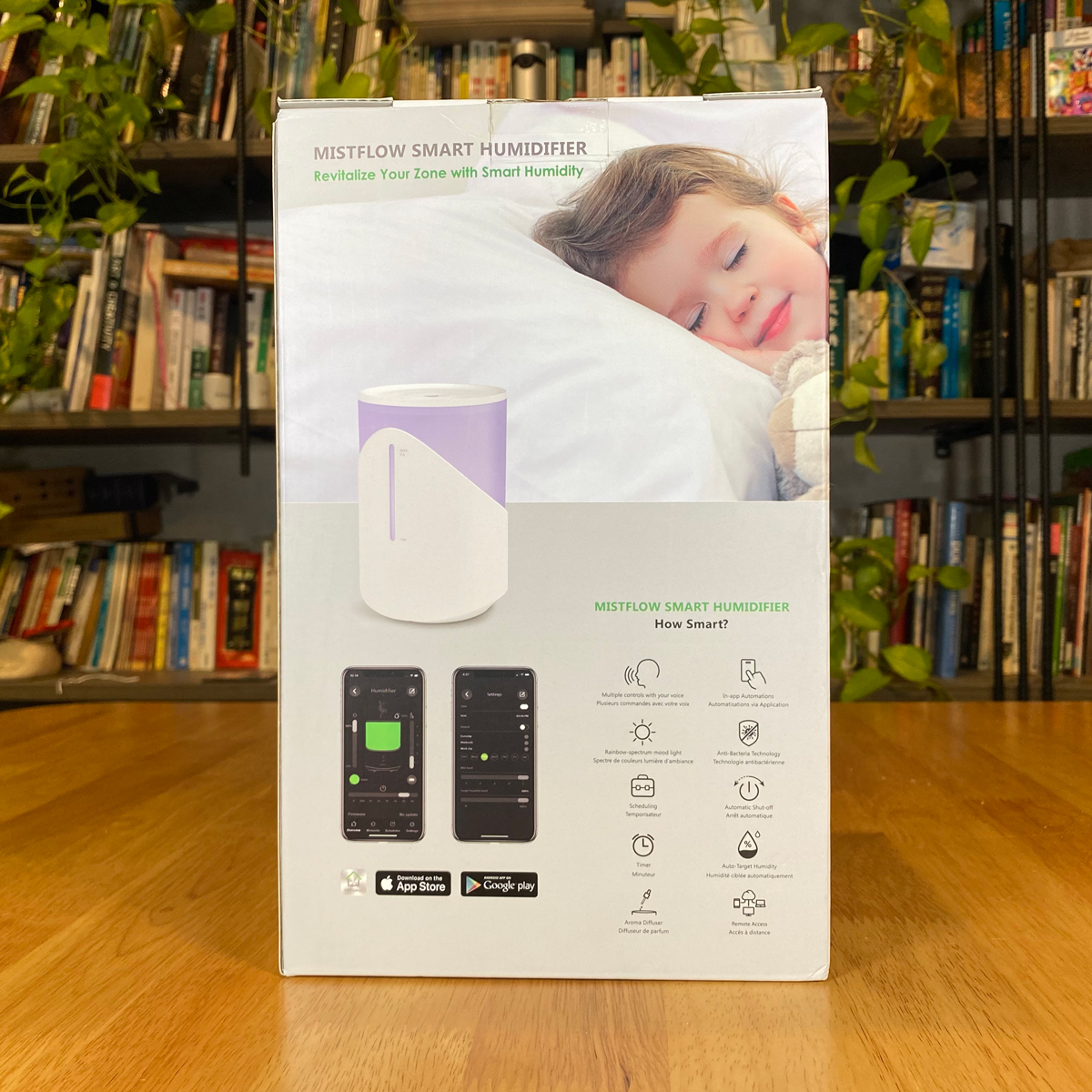
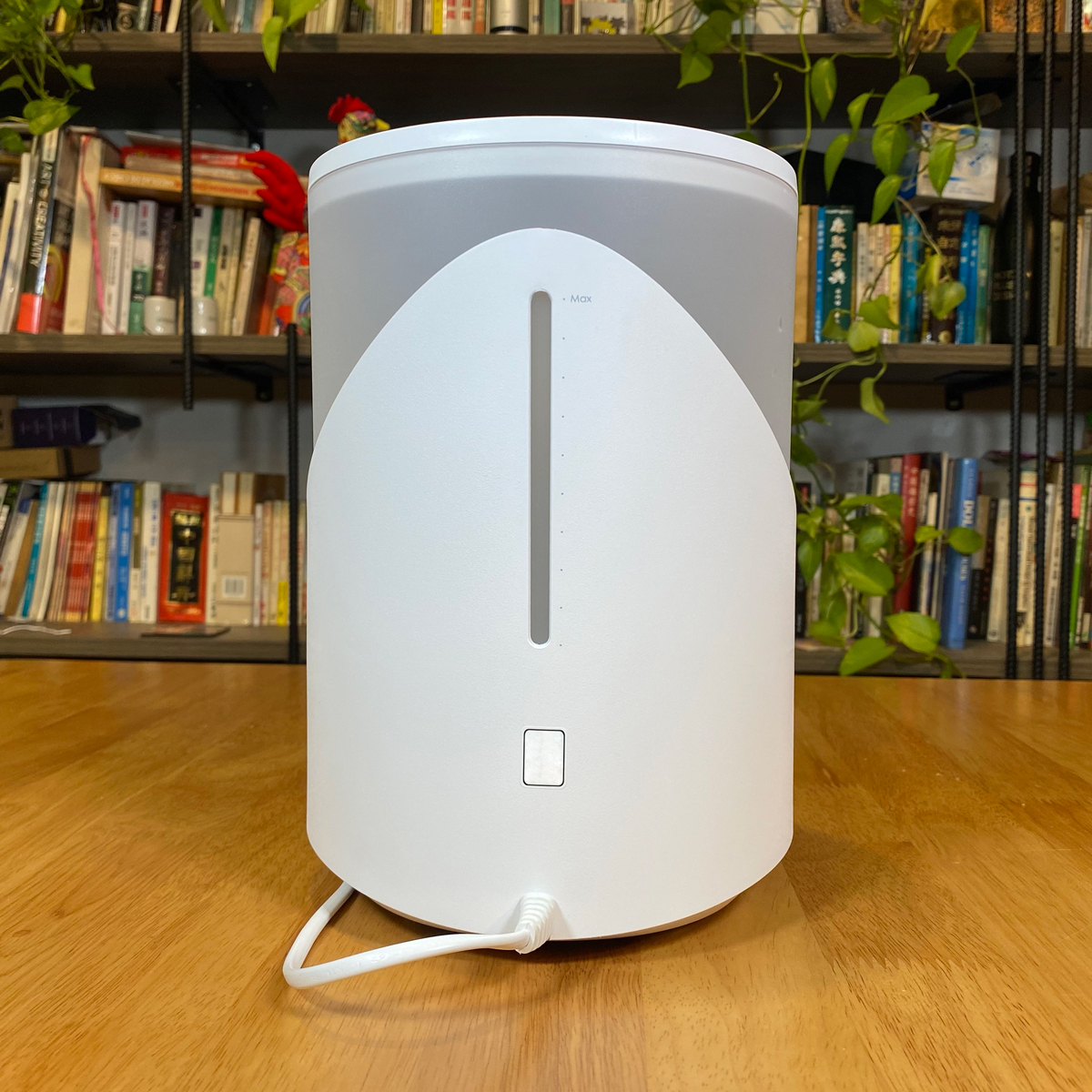
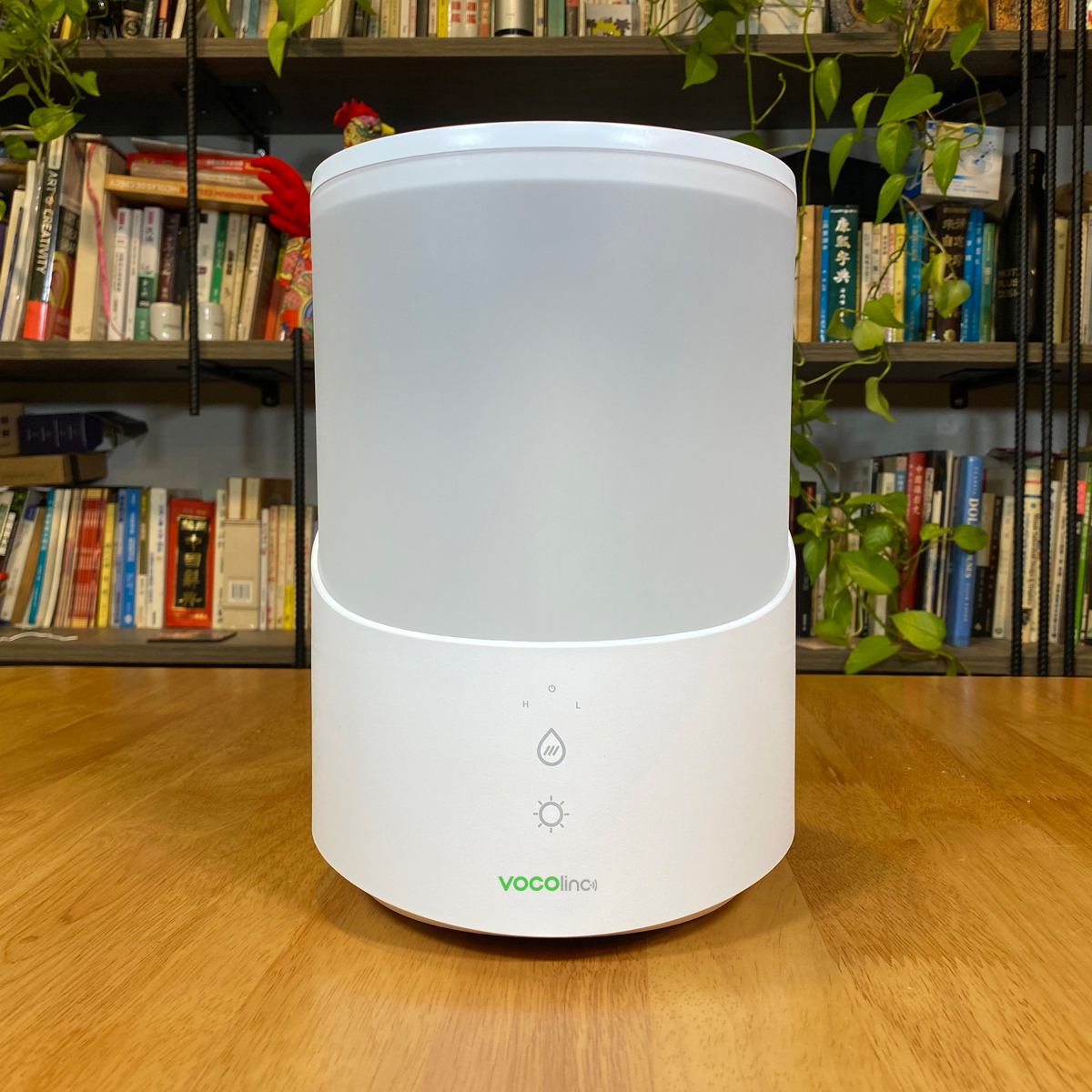
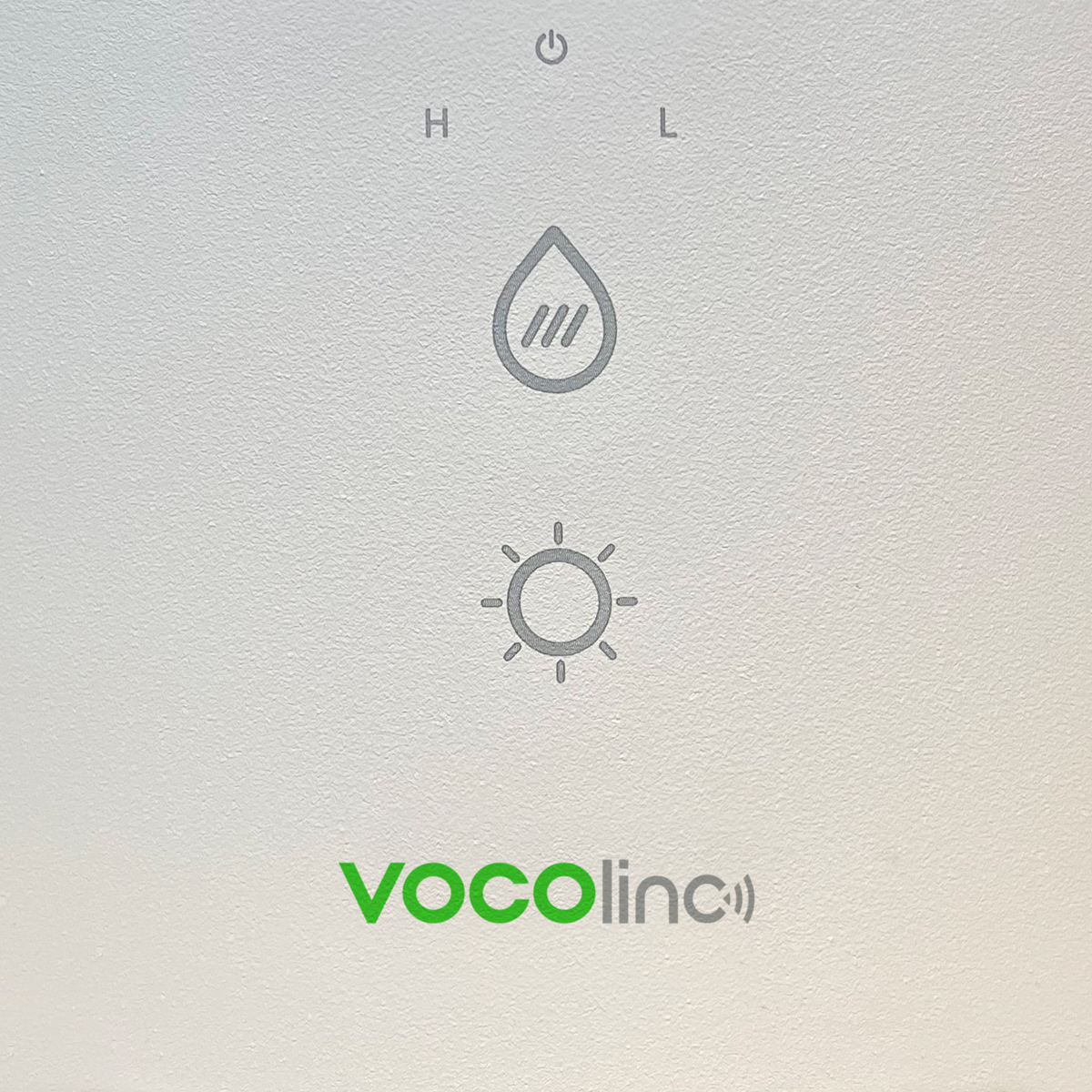
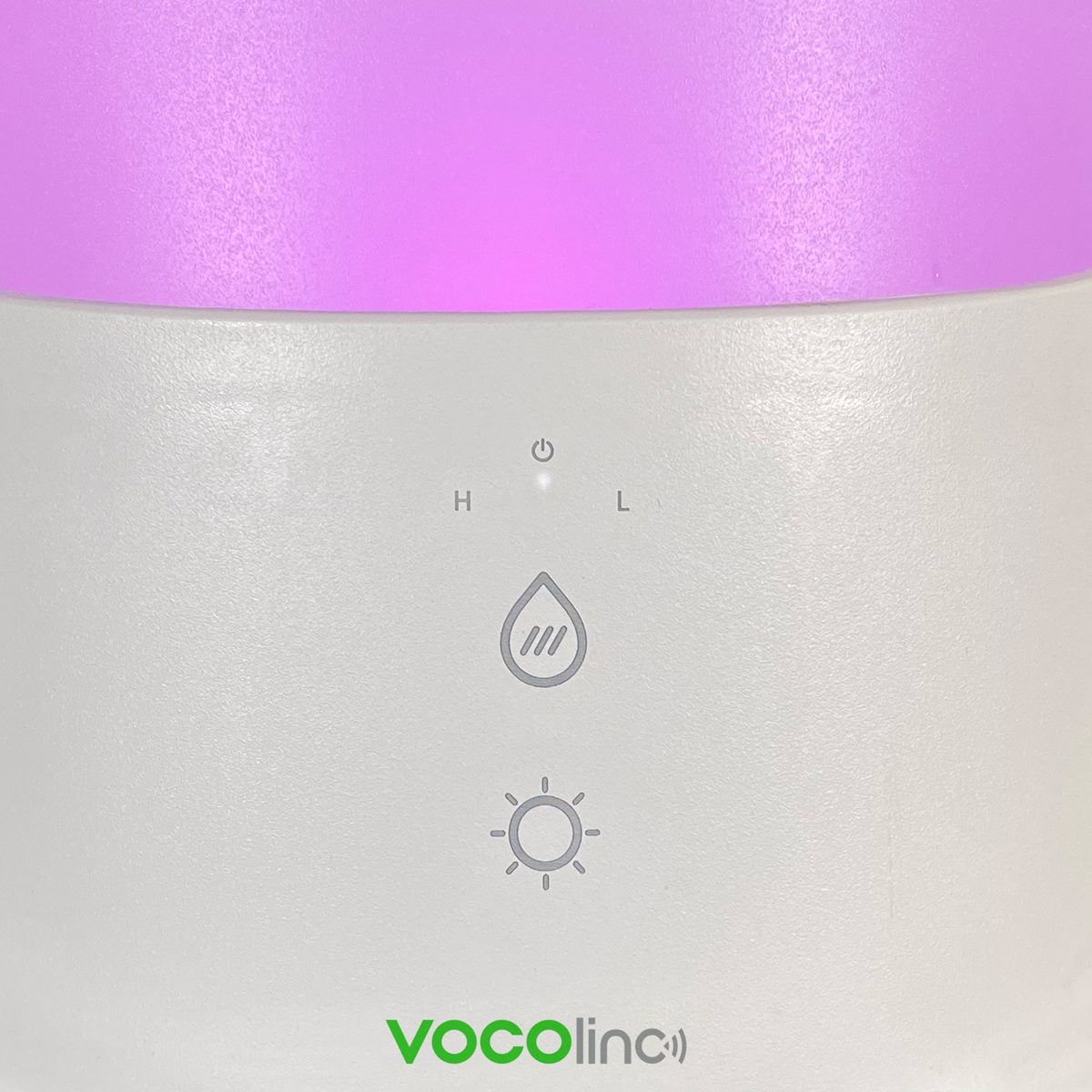
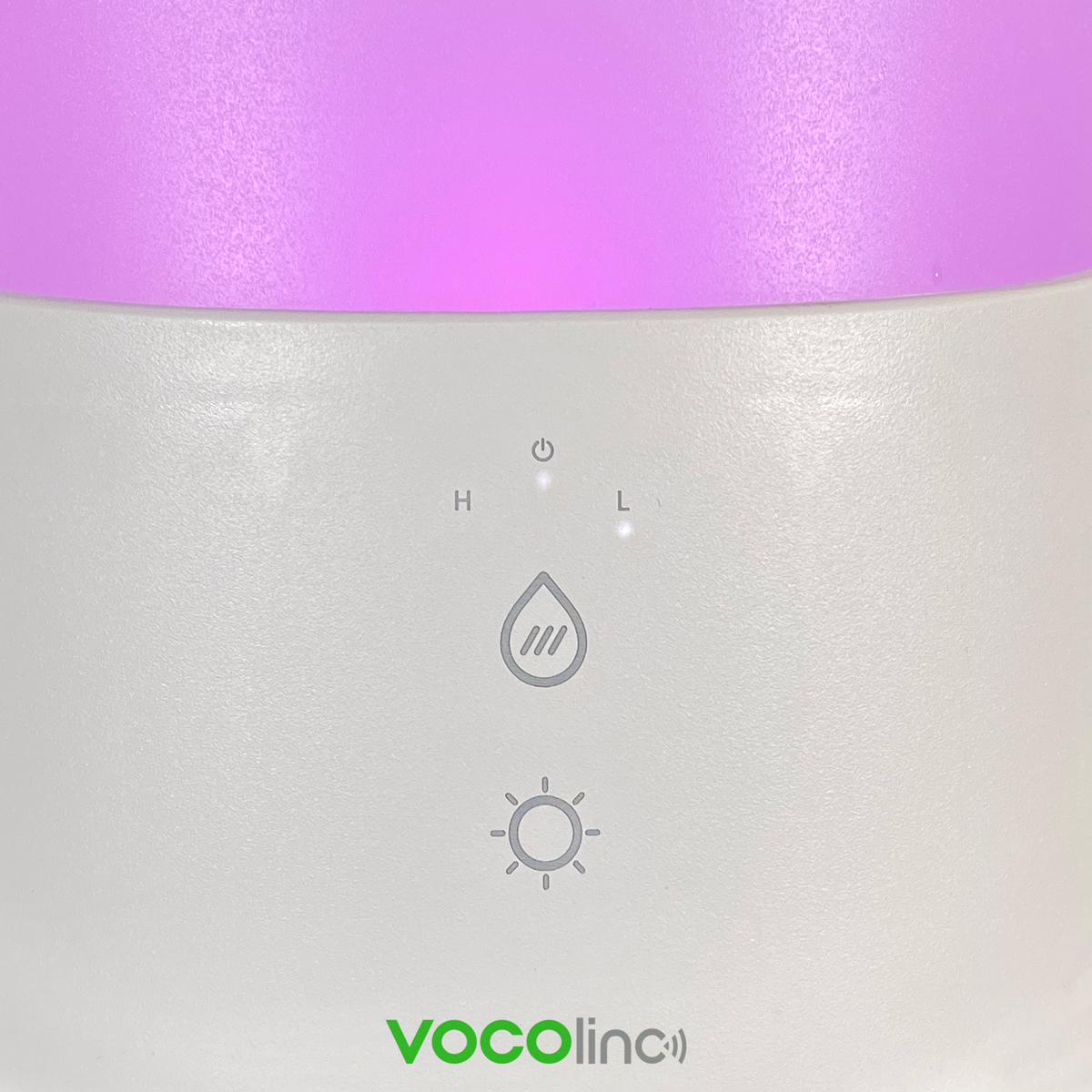


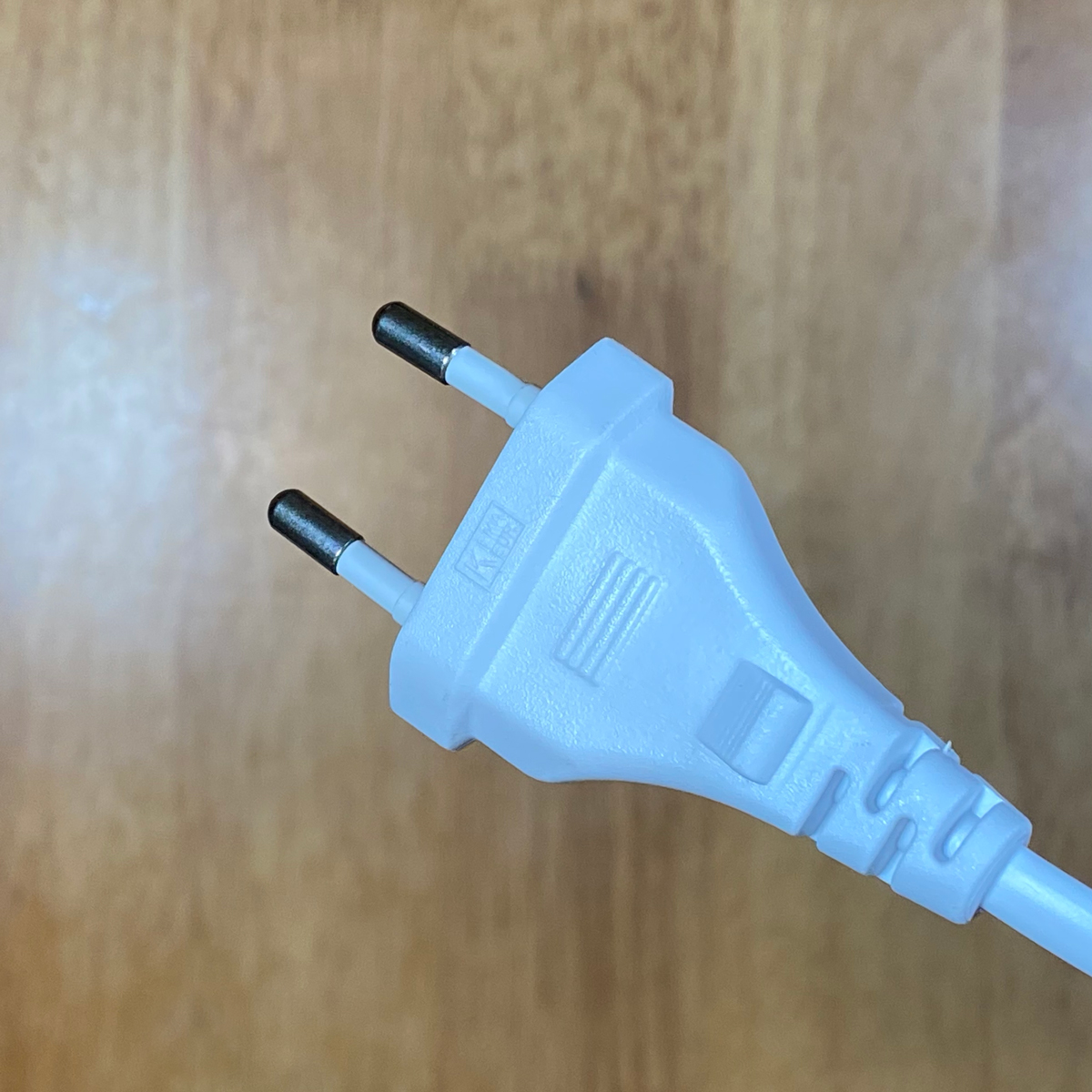
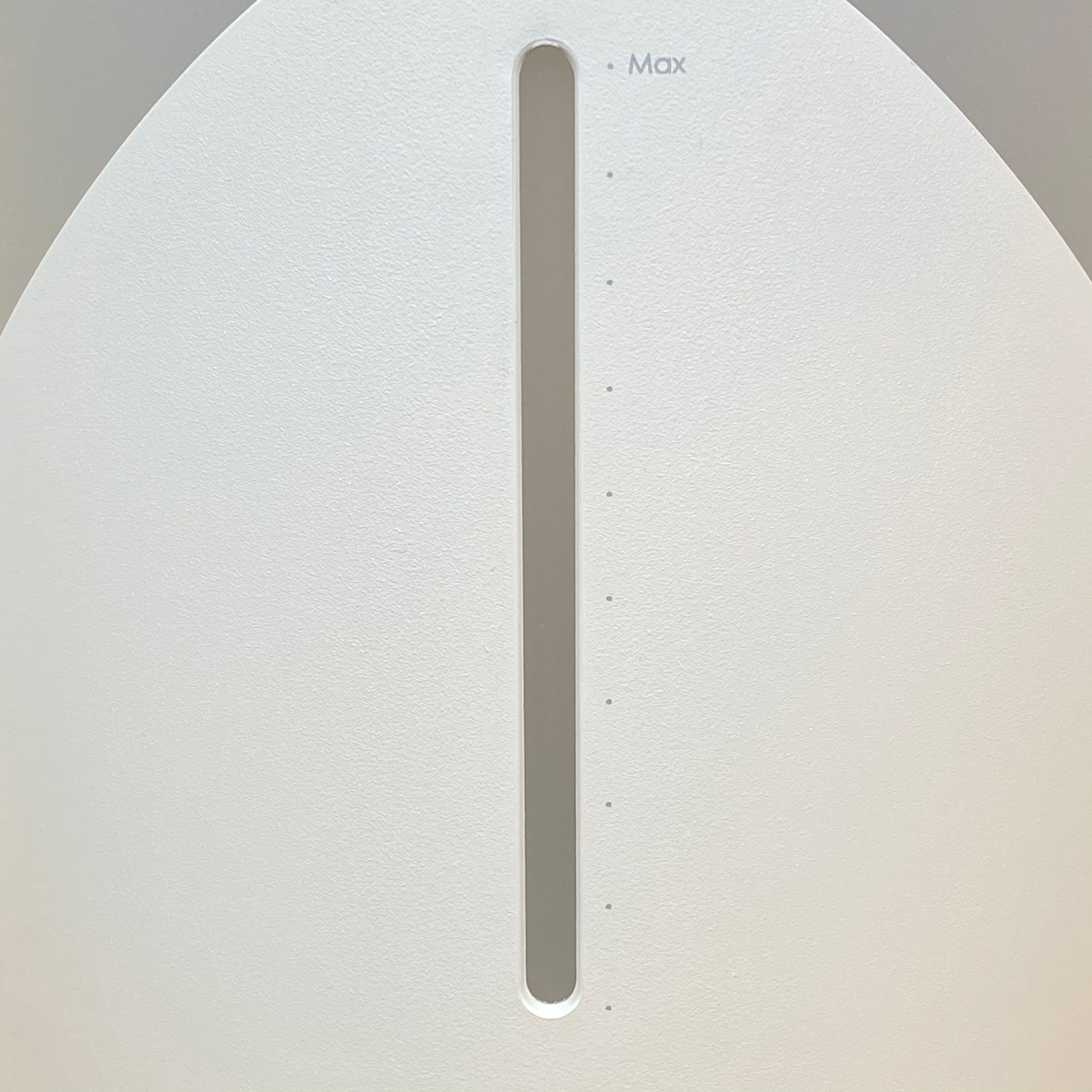
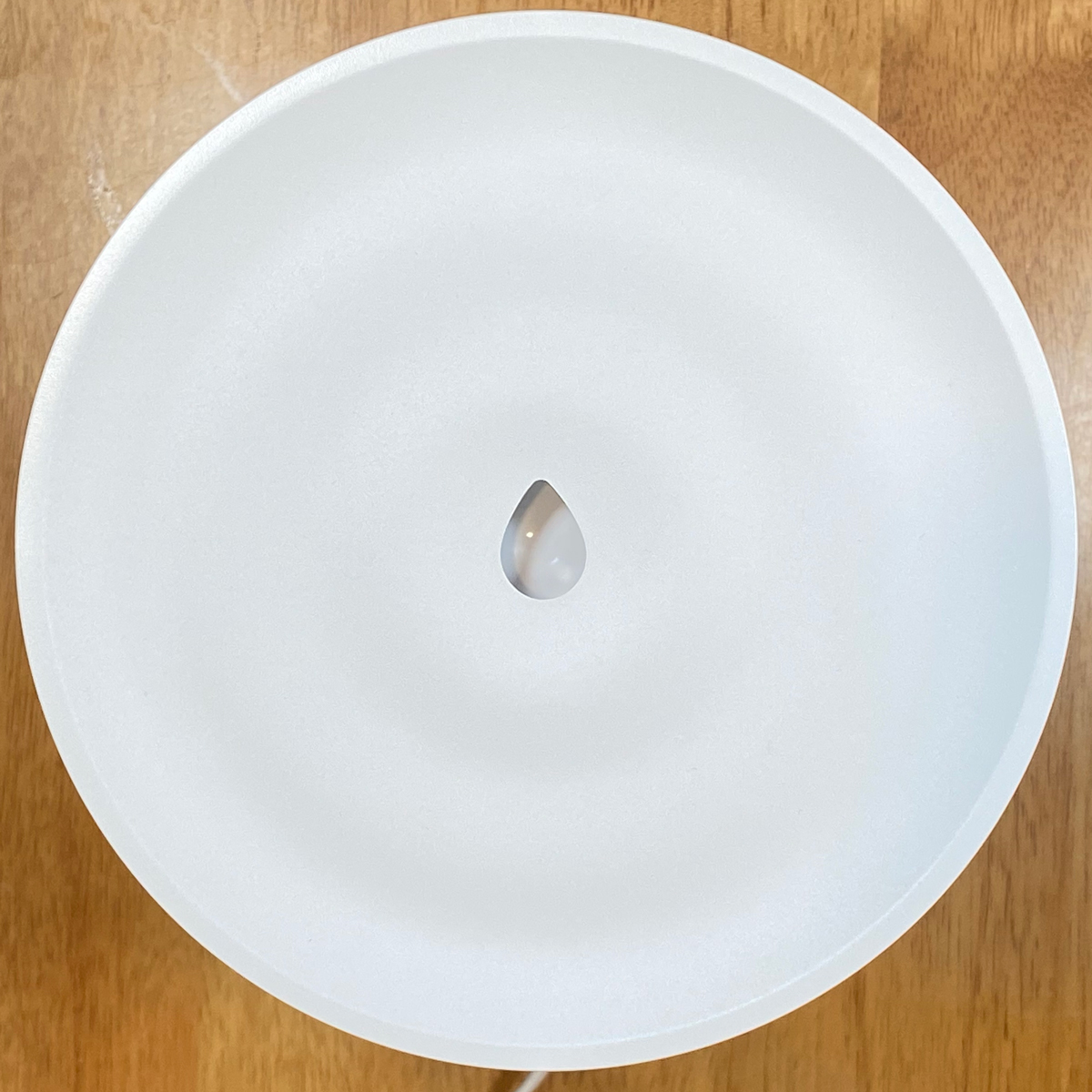

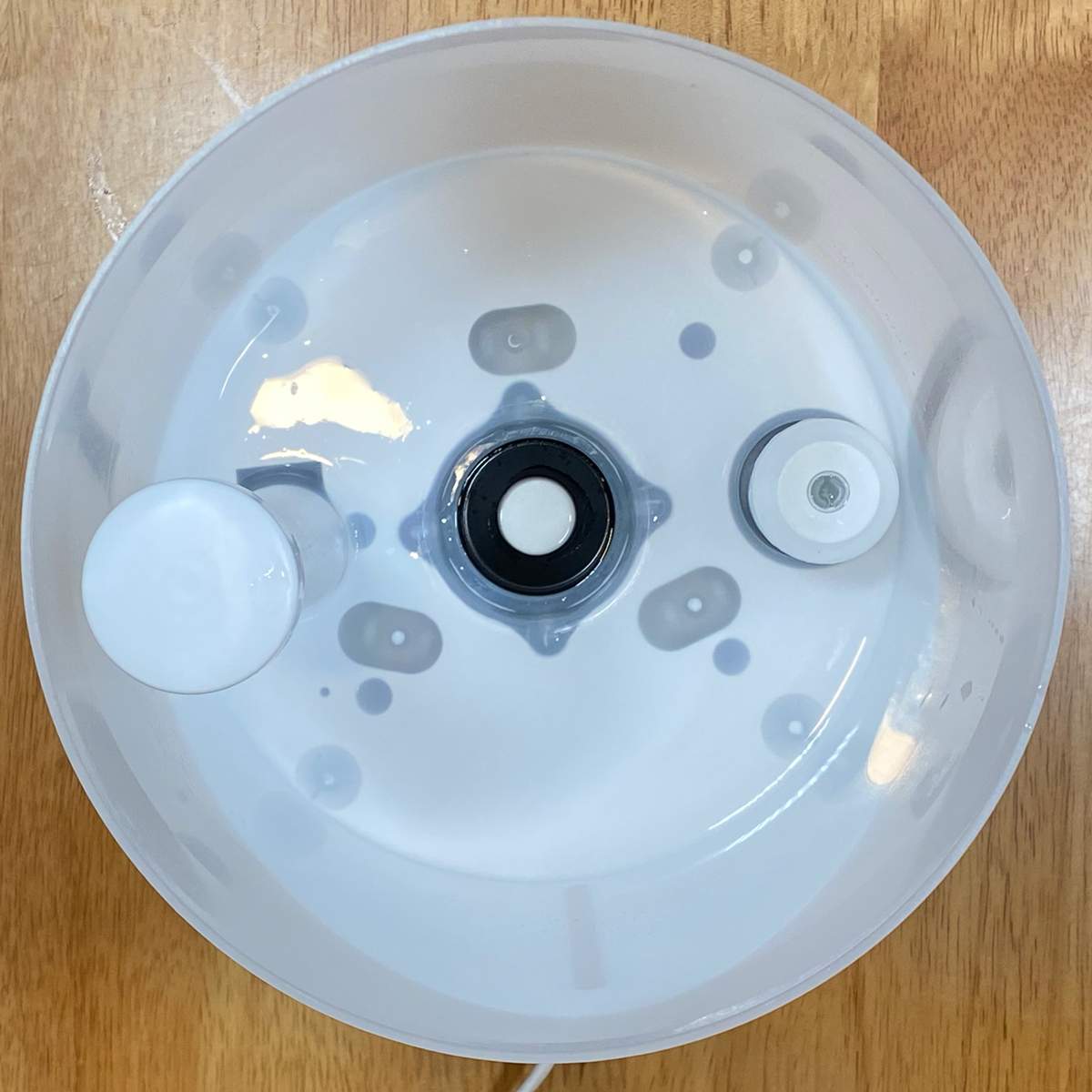
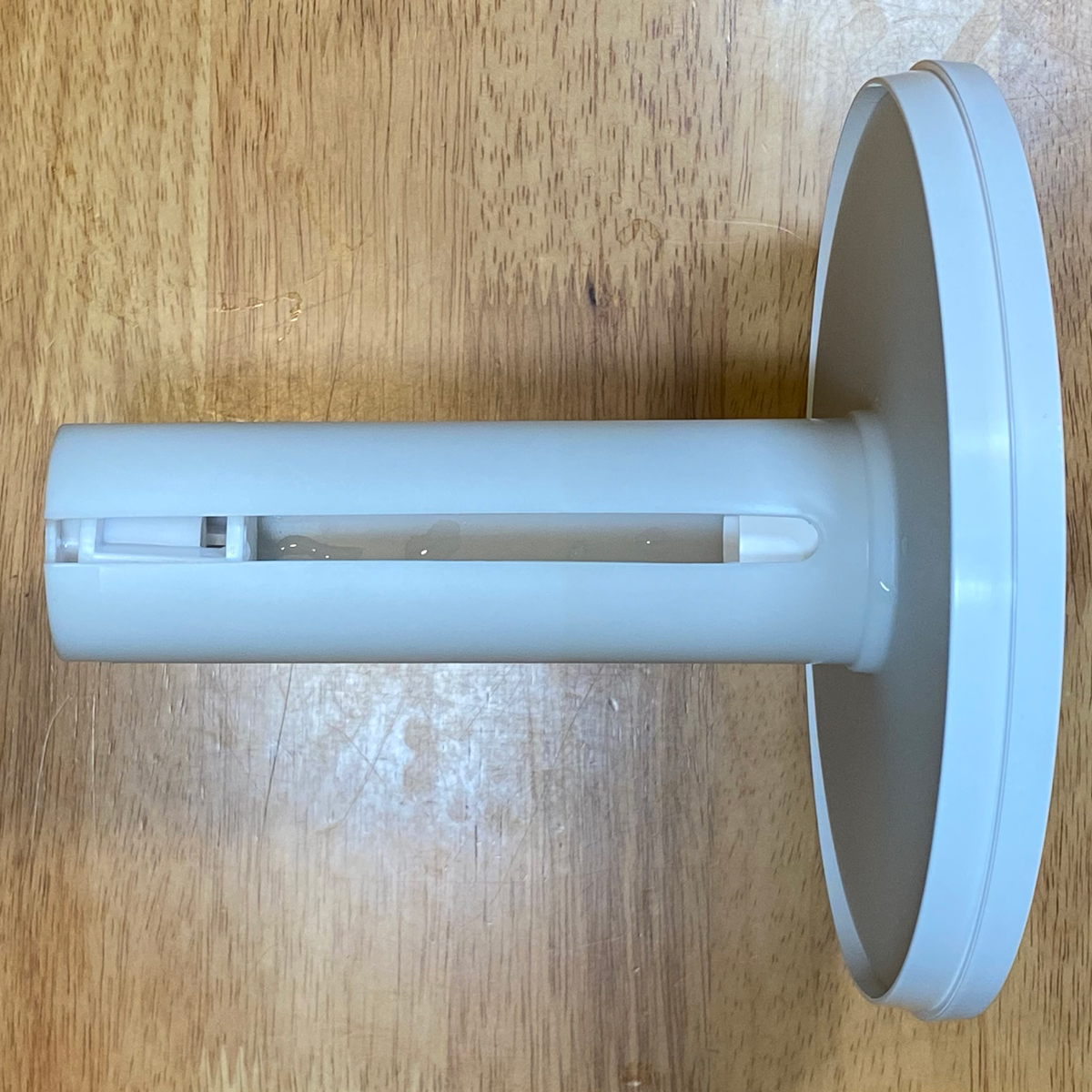
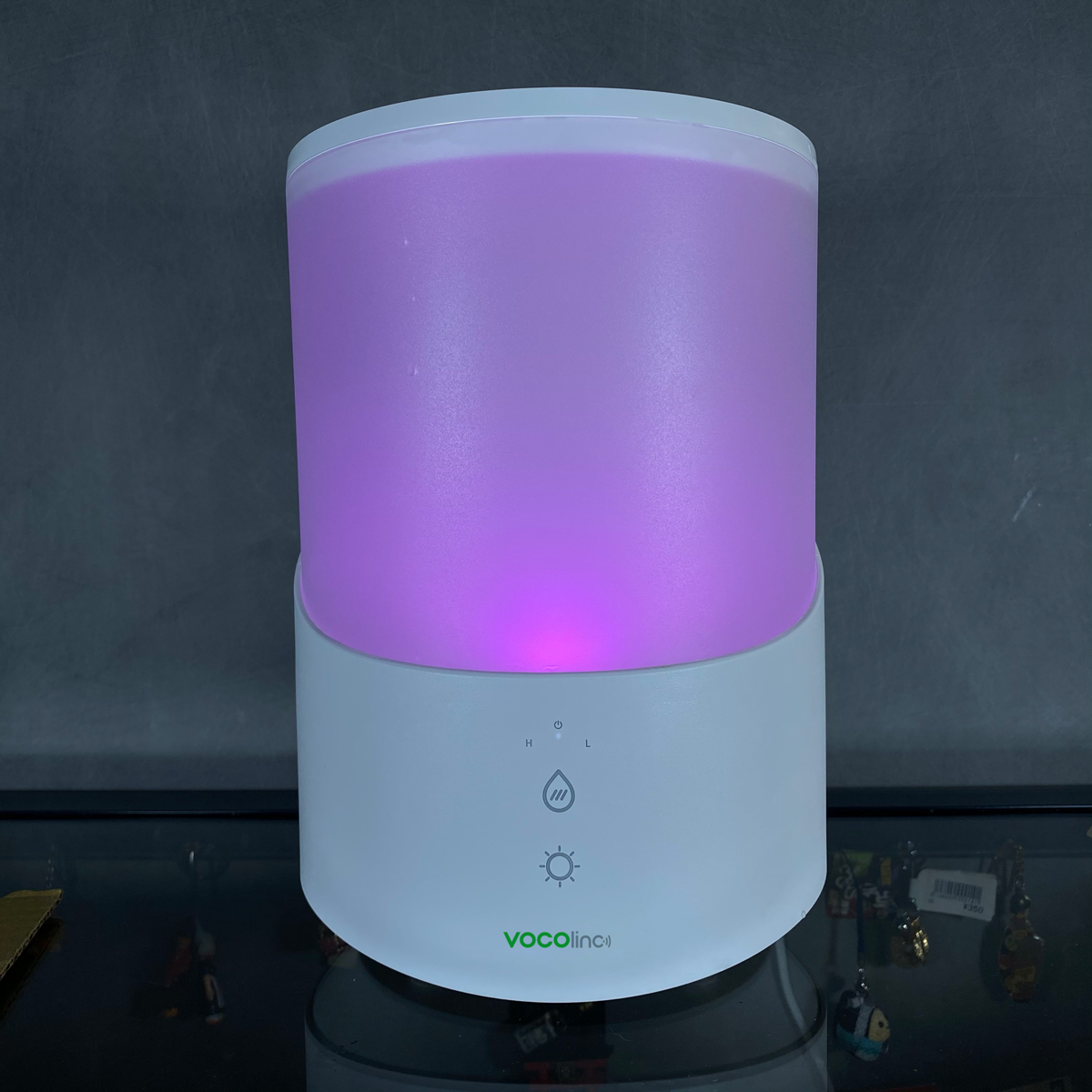
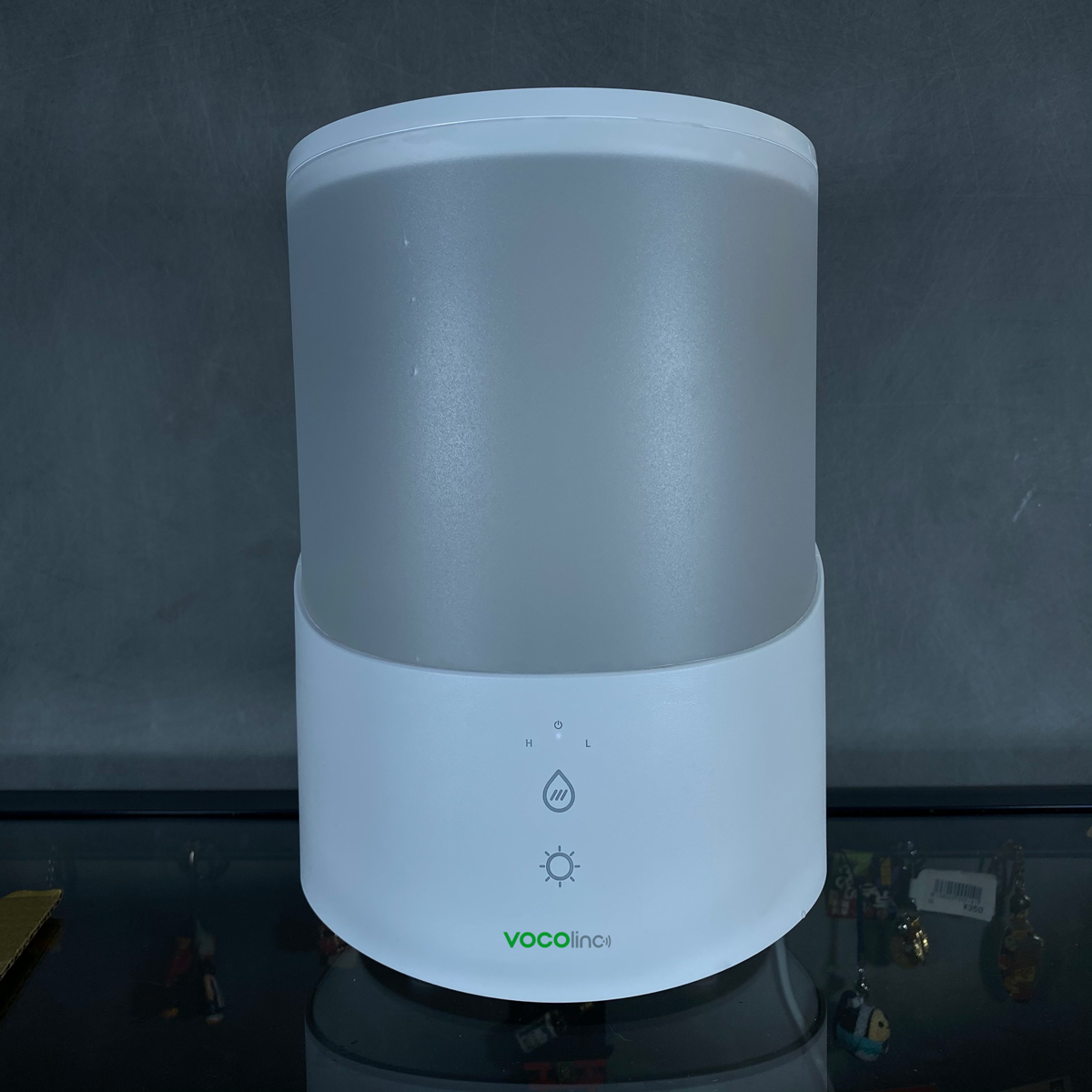


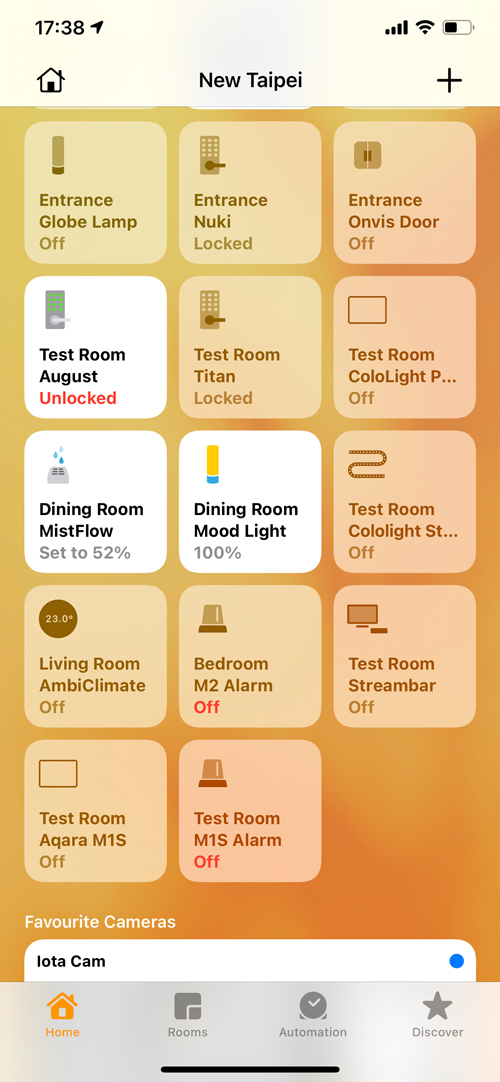

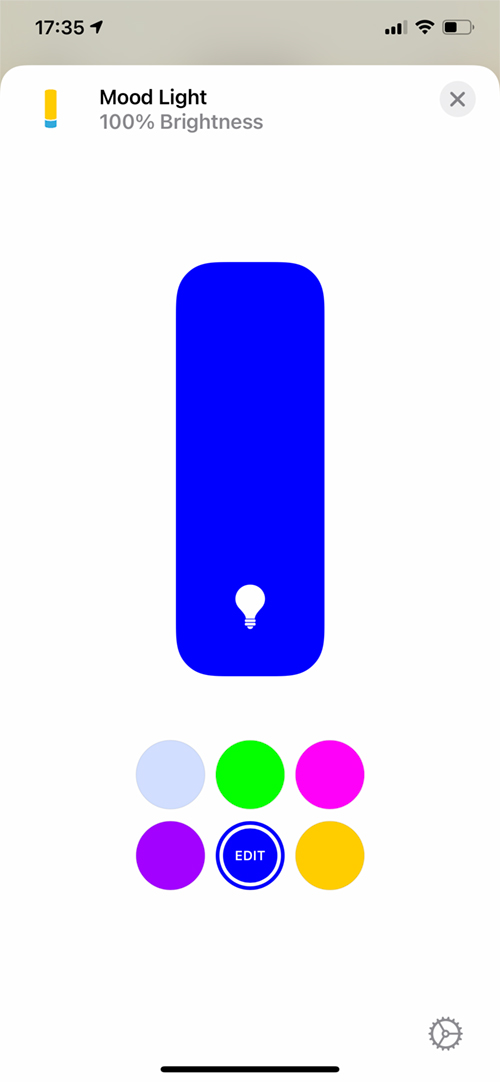
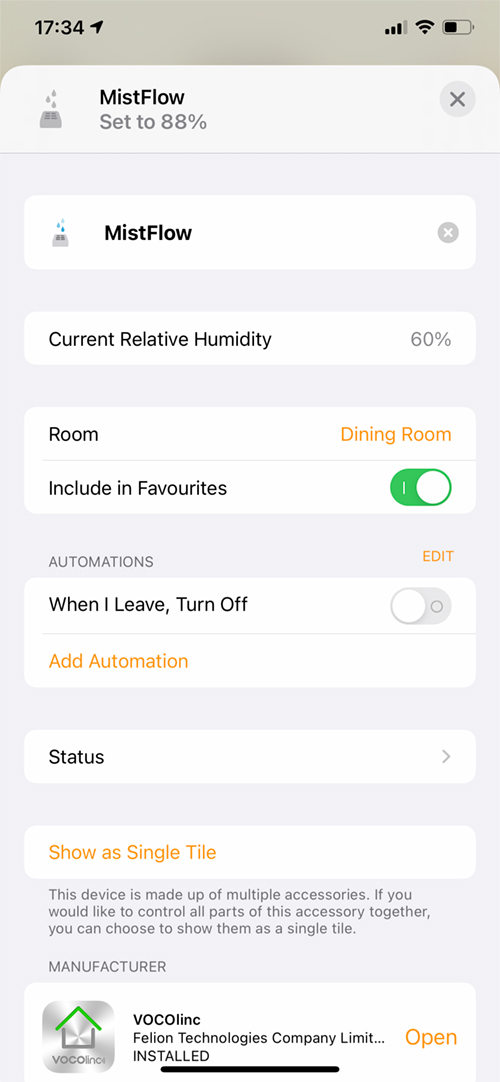
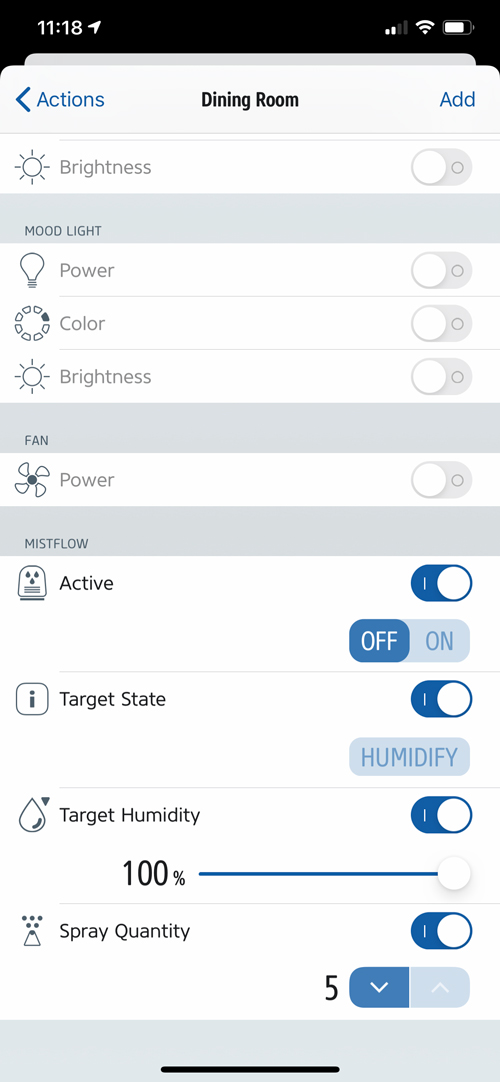
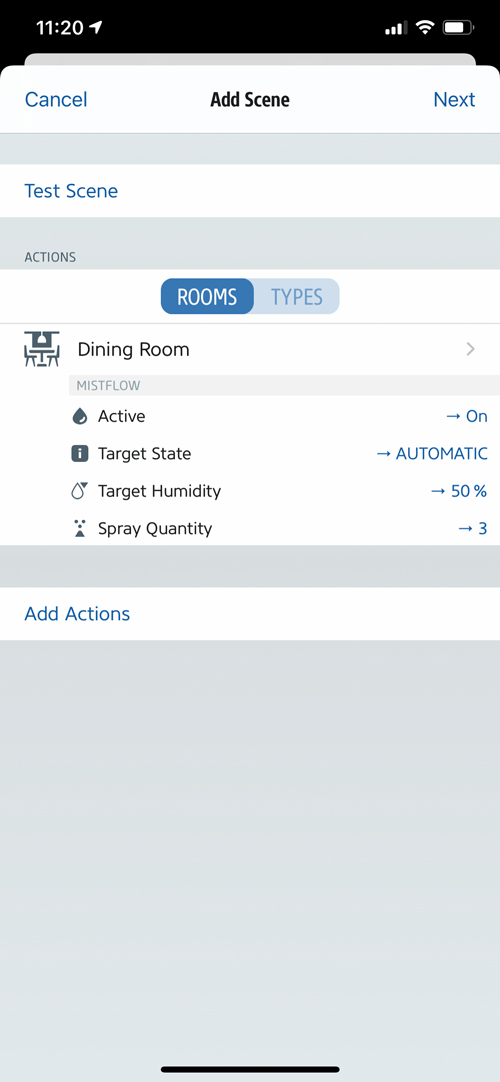
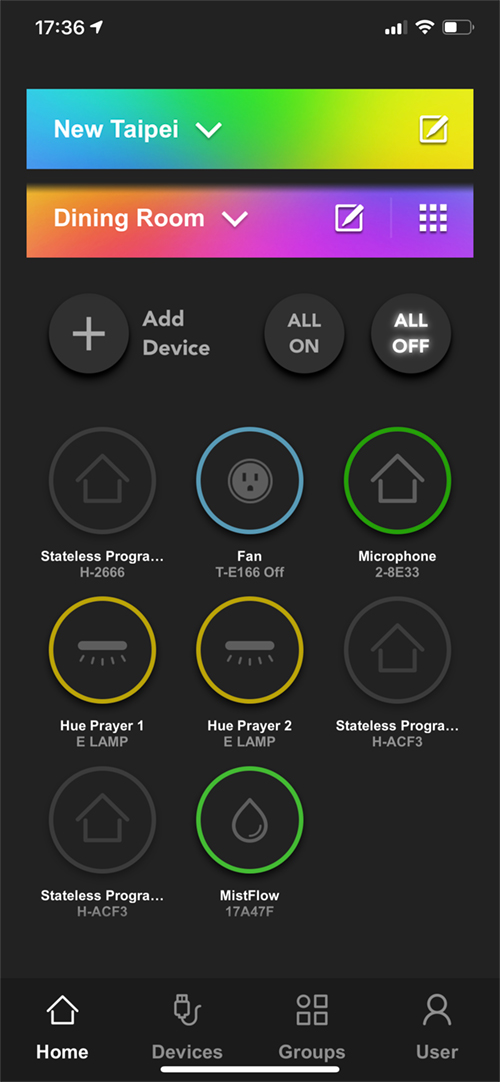
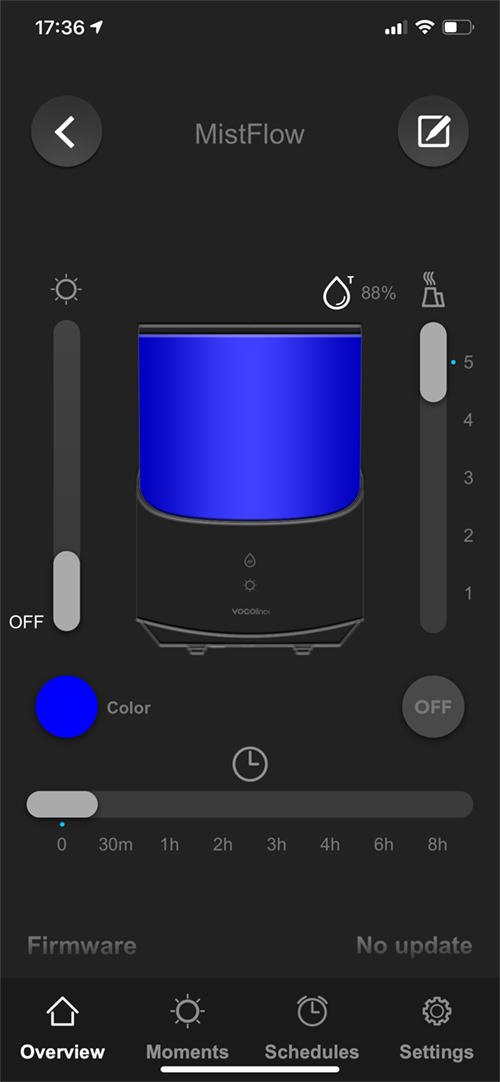

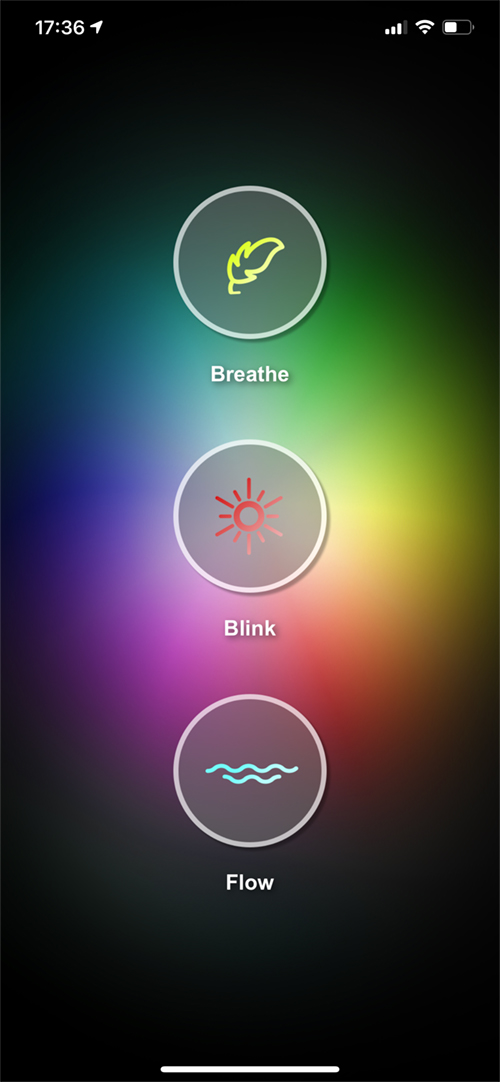
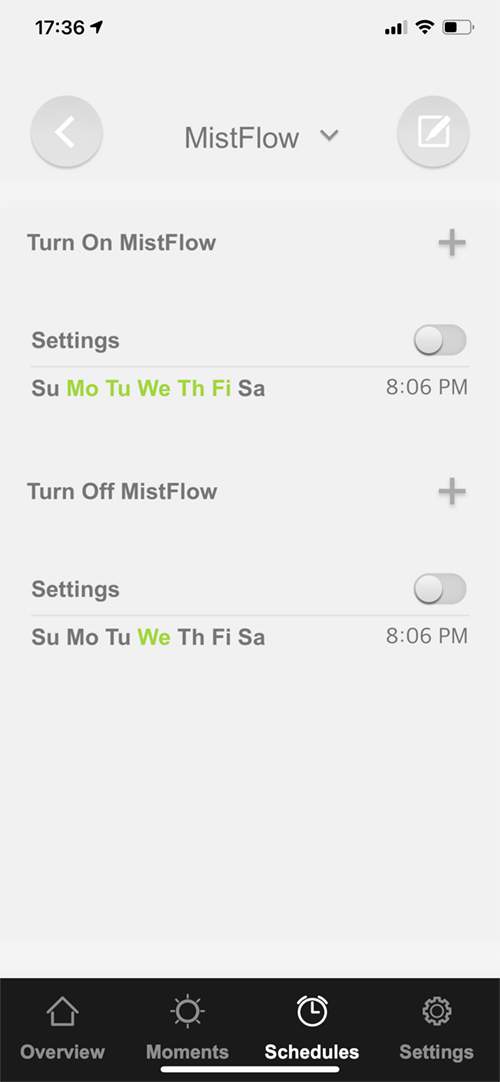
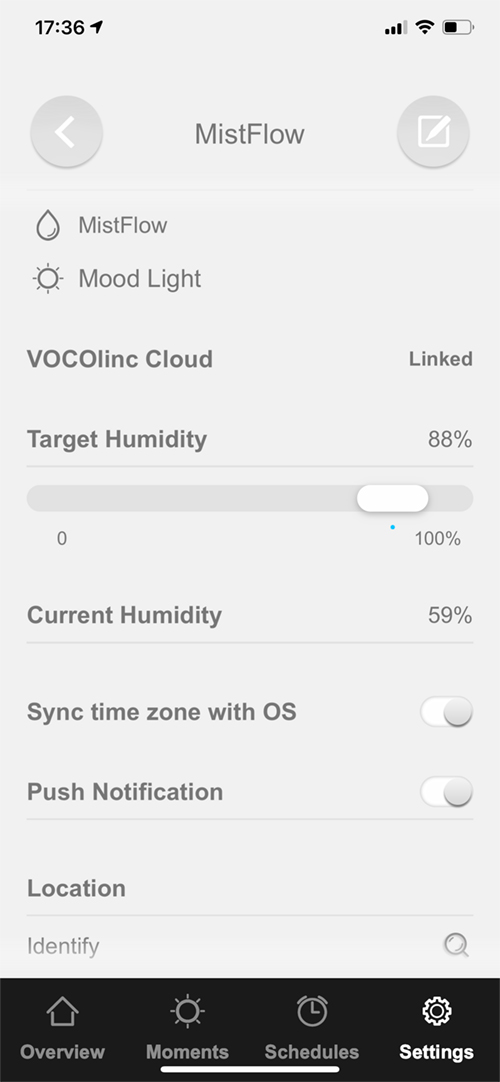
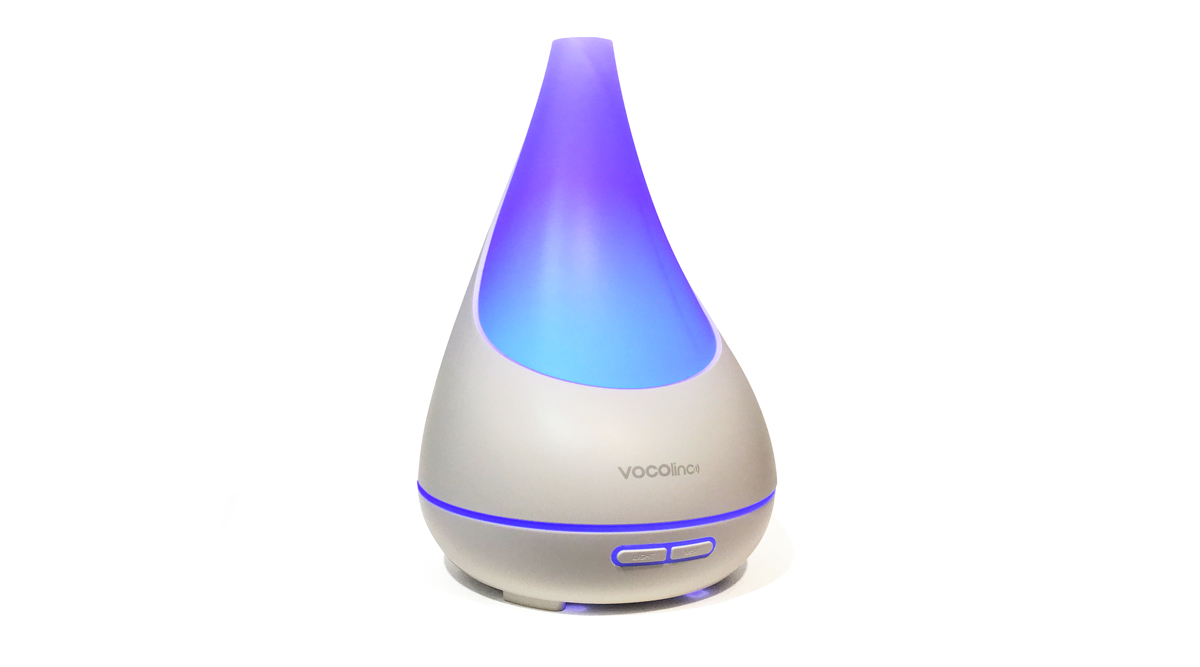
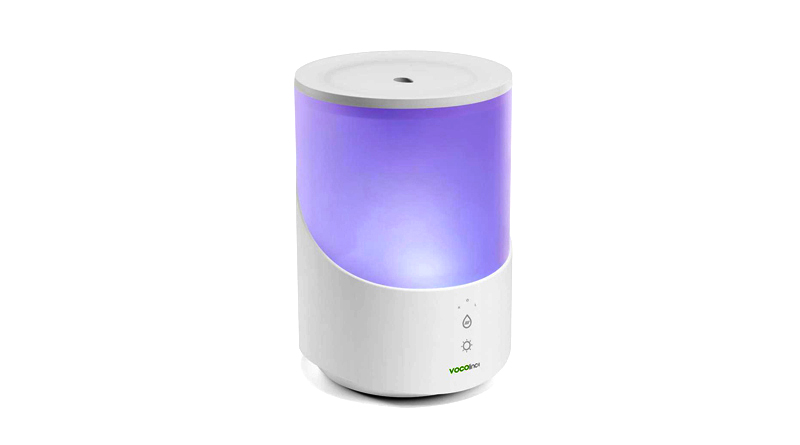



Leave a Reply